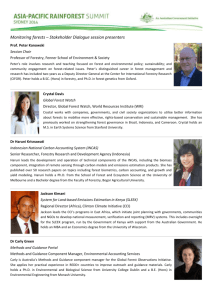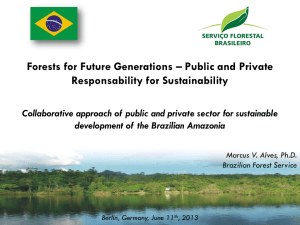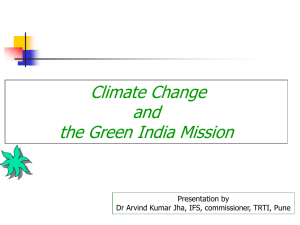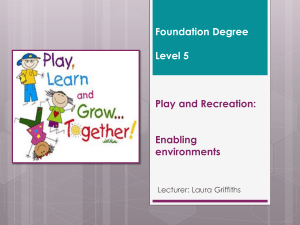Is there any way provided in your country through
advertisement
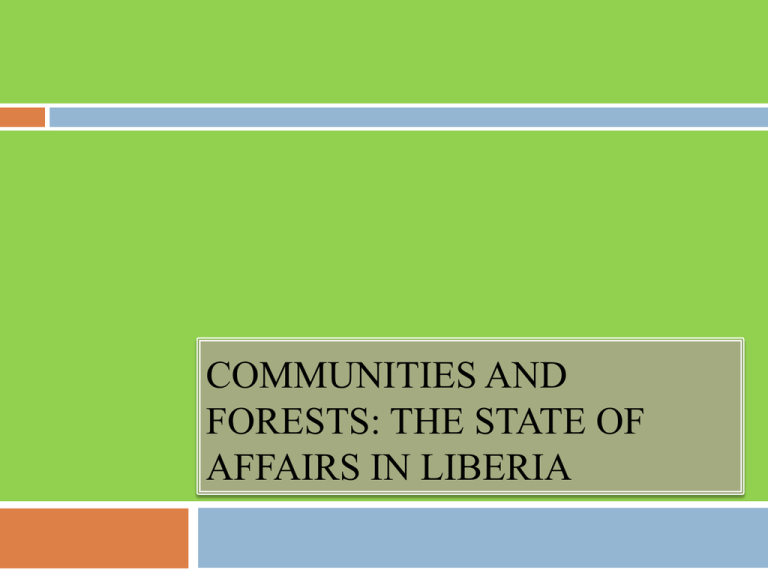
COMMUNITIES AND FORESTS: THE STATE OF AFFAIRS IN LIBERIA Are customary land rights considered property rights or just rights of occupancy and use of lands? The situation in Liberia is not completely straight-forward. The occupancy and use rights are clear. The property rights is less clear – especially for those land areas that have not been registered formally. However, for political expediency, the government ‘requires’ consent (tribal certificate) from communities before they can issue permission for the surveying and documentation of land in rural areas. Is there any way provided in your country through which a community may be recognised as the legal owner of its local forests, pastures or wetlands? Different laws provide different avenues with different outcomes. Communities may apply for formal title by following the legal procedures that includes two presidential approvals – one for survey and one for the title. The other, which is not as secure as the formal title, involves identifying and agreeing your boundaries with your neighbours, organizing internal governance structures, adopting by-laws and management plans and then formally registering it with the forestry authorities. Are there any forests in your country which are today acknowledged in law as the property of rural communities? Yes and NO. When it suits the government, especially the forestry authorities – they acknowledge and use community claims. When it does not, for example in 2008, they forestry authorities argue for a separation between TREES and SOIL (by land forests are an integral part of land – definition of land in the Land Law includes trees growing on the land) When forests are made national domain, or reserves or parks, what rights do local communities retain? Until recently all forms of community uses were forbidden. Now, there are considerations for multi-use areas and timber concessionaires are expected to allow extraction of NTFPs in their concessions for local uses. Do communities play a formal role in forest management? If so, how? Communities are allowed to establish Community Forestry Development Committee (CFDCs). CDFCs serve as liaisons between the government and logging companies, access community shares of forest related fees, and invest in community development. The Community Forestry Management Bodies (CFMBs) play similar roles but their mandate goes beyond and includes serving as the local forest governance hub. Community representatives also serve on the National Benefit Sharing Trust Board – this broad receives and distributes communities shares of forest related fees. The NGO Coalition Facilitator serves as the Chair person of the board. Communities will also be represented on the national multi-stakeholder committee that will oversee implementation of the VPA. Is there provision for a community to become the legal manager of a forest reserve? Yes, the CFMBs when organized may play the roles of forest managers; but not specifically for forest reserves. However, if the community so desires to designate some of their forest as a reserve, they are allowed to do so and in that case the CFMB may then serve as a manager of such reserve. Do communities have a say in government decision making around forest use? If so, how? Yes, the laws provide for that (implementation is another matter). During planning, communities are to be consulted about the different proposed uses. Communities are consulted and make inputs to forest regulations. A community may request for its area to be excluded from a concession; the only request we are aware of (GouNwolaila) was not respected. What are the threats to increased community control over forests, including threats to the forest resource itself (such as “land grabs” for agricultural production for export, logging concessions, making new protected areas)? The key threat to communities and forest resources is from the agriculture sector. Two of the most recent grants cover more than 600,000 ha. They also pose the greatest threats to communities’ livelihoods and land rights – displacement and forced relation are a major concern. Another threat, on the horizon, is the possibility of REDD/+ projects in the coming year. If significant quantities of Land are given for REDD/+ projects, this will further squeeze communities to the margin, as their access and use rights would be severely affected How are any community rights to forests lands/resources that are defined in law actually protected in practice? In Liberia, protection of community forests lands and resources is almost non-existent. As stated earlier, the government ‘protects’ when it suits – for example the Private Use Permits are being used as back door to allocate logging concessions. To allocate PUPs, the land must be private land – therefore titles that were rejected 2 years ago are now being accepted by the forestry authorities. What legal tools (statutory and/or customary) exist to deal with forest resource conflicts between different stakeholders: communities, government, private sector? Are these legal tools working effectively for communities? The Forestry Development Authority is the forest law enforcement agency, the manager of forest, the statutory facilitator of forest related stakeholder relations, and the arbitrator in cases of conflicts. In cases where communities are aggrieved as a result of FDA actions, the FDA serves as arbitrator of such matters? Can this effectively work for communities?




